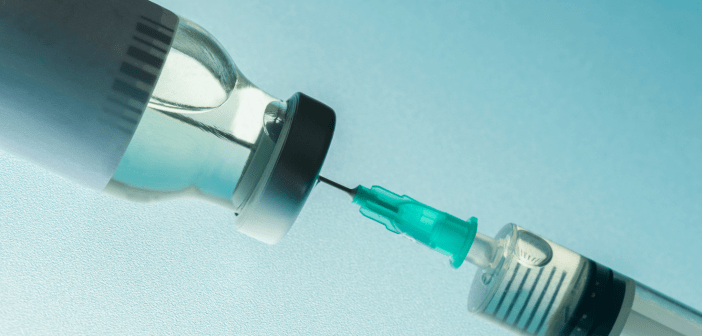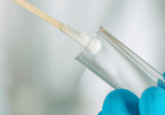COVID vs flu vaccinations: are they similar?

In this interview, expert Lisa Kierstead discusses the differences between COVID-19 and influenza vaccinations, the challenges the FDA is facing in implementing a yearly vaccine for COVID and the progress we can expect in 2023.
 Lisa Kierstead
Lisa Kierstead
Executive Director, Vaccine Sciences Lab
PPD, part of Thermo Fisher Scientific (PA, USA)
Lisa S. Kierstead is the Executive Director of the PPD Vaccine Sciences Department (VSD) working with the business development department to interact with clients and grow the business. Her experience spans infectious disease and oncology, including dengue, norovirus, pneumococcus, meningococcus and melanoma. The VSD supports many vaccine programs in various stages of development. She has extensive experience working with clients to move vaccine candidates through the clinical development pipeline, including regulatory submission.
Before joining PPD, Lisa was a Research Fellow at Merck Research Laboratories (NJ, USA) in vaccines and biologics. Lisa was responsible for the development and validation of assays and the testing of clinical samples in support of vaccine programs.
Lisa received her PhD in Microbiology and Immunology at the Milton S. Hershey Medical Center of the Pennsylvania State University (PA, USA). Her studies focused on the cellular T lymphocyte responses to infection with herpes simplex virus types-1 and-2.
1. What is it about the COVID virus that makes it similar to the flu virus?
There are several characteristics that the two viruses share. One is that they are both RNA viruses, which are different from DNA viruses. The difference between RNA and DNA viruses is what their genome is made up of. COVID and flu genomes are both made up of RNA, which makes them more susceptible to mutation. As a result, we now have a lot of different strains and variants for both viruses. For flu, we have several different strains and, as everyone knows, for COVID we have a lot of different variants. Another interesting characteristic shared between the two is that they infect several different species; flu can infect birds and pigs, for example, and COVID can also infect many varied species of animals including cats, dogs, etc.
2. What are some of the recommendations for both flu and COVID vaccinations?
Currently, the flu vaccination schedule is seasonal and is recommended to be taken in the early fall in the US. The US has had a consistent flu vaccination schedule for a long time and it is a very well-established process. COVID, on the other hand, is relatively new and has changed significantly since the onset of the pandemic. Initially, we had a recommendation for a primary vaccine and then a single boost for the COVID vaccines. Then, we started to see multiple variants popping up in circulation. The recommendation at that point was for additional booster vaccination options with the original strain. It wasn’t really until more recently that the first variant vaccines were readily available.
For individuals, the recommendation was to get a combination vaccine, which included the variant and the original strain. Compared to flu vaccines, the vaccine recommendations for COVID have been more reactive than they have been proactive and evolving. It has only been since late 2019/early 2020 that we’ve been dealing with COVID, so it’s been progressing as far as the vaccine recommendations.
3. If the FDA is considering implementing a yearly COVID vaccination, what considerations need to be prepared for? For example, timelines, strains, et cetera?
The FDA is considering a more consistent approach to the COVID vaccination implementation, including a yearly vaccination. A key consideration when rolling out this schedule is the composition of the vaccine, which would be determined on a yearly basis and would most likely be a bivalent vaccine. This means you may have two variants, or perhaps the original strain plus a variant of concern. However, there’s a lot of information and data that needs to be gathered in order to make that assessment, for example, you need to consider the epidemiology and clinical surveillance of the COVID variant strains that are circulating and those that are causing symptoms.
Also, viral surveillance and genome analysis are going to be significant because it will inform the vaccine composition or the sequence of the vaccine that is needed for the recommendation. There’s a lot of information that needs to be assessed including real-world evidence. We will need to assess what’s going on globally, but especially within the US for US recommendations, considering questions such as, what does the virus look like? Who is it impacting? Who is it infecting? Who is it causing symptoms for?
There’s quite a lot of work that goes into the assessment of the strains, especially when manufacturers are considering how the vaccine is going to be composed. In late spring/early summer, the FDA would look at all of that information and try to determine what the composition of the vaccine would be. Right now, it’s looking like the vaccination rollout would be in the September time frame, but all of this is subject to change until they make the final decisions on exactly what the life cycle is going to look like for this vaccine.
4. How would vaccine manufacturers manage and respond to the new COVID vaccination?
Every year, manufacturers would need to get into the production cycle once the appropriate strains have been identified that are going to be in that vaccine. Then, manufacturers need to develop the reagents that are needed for their vaccine. We know there are several different types of vaccines out there; there are RNA vaccines, but there are also other vaccines that are viral vector–based and it takes a substantial amount of time to generate those vaccines. Many critical reagents need to be developed prior to vaccine production. Once produced, testing on the vaccine from a product perspective is needed to ensure quality and that it’s clean, making sure it doesn’t have any contaminants or factors that might be dangerous to individuals, so there is a lot of safety testing beforehand. They will also do their final fills and then they will release it to the public. Upon the vaccine’s release, there must also be an assessment of whether the vaccine is effective. Manufacturers need to come up with a data package that has to be submitted to the FDA and that data package includes all of the chemistry, manufacturing and control (CMC), which is all of the manufacturing information that goes along with the generation of the vaccine. So, there’s a lot that needs to be done to manufacture and release a new vaccine before it goes into use by the public.
5. Would manufacturers have to conduct yearly immunogenicity studies prior to the release of this vaccine?
Once the new vaccine composition is determined and the vaccines are manufactured, then manufacturers would need to assess the immunogenicity and the vaccine effectiveness. There would need to be clinical immunogenicity studies conducted. I don’t know that they would consist of the large, phase III studies that were conducted with the initial release of the very first COVID vaccines, but they would need to be evaluated to whatever extent necessary. The other thing that’s been used quite a bit is what they call real-world evidence. Real-world evidence would be obtained once you release the vaccine to the public and you generate a lot of data to look at. This data will then show what happens in the general population once the vaccine is released, how many people receive the vaccine and get infected with the COVID variant, what the symptoms are, how sick people get, etc. They have to look at all the unique populations, including healthy people with vulnerabilities that may make them more susceptible to side effects of the vaccine. There’s the clinical study to look at for immunogenicity, but they also must look at what happens after you give out the vaccine and follow the population that has been vaccinated. Real-world evidence produces a lot of data that will inform the industry about future vaccination development; it’s a really important step for any kind of vaccine or drug.
6. What progress can we expect in 2023 regarding COVID vaccinations, particularly with the FDA for example?
There is currently a lot of ongoing discussion within the FDA. Engaging with the different manufacturers, looking at a lot of data, looking at the epidemiology of what strains are circulating, what variants have been popping up, what kind of symptoms they are causing and whether some populations are impacted more than others. So, there’s a lot that’s going on from a scientific perspective and all that information is really geared toward the question: what strains do we want to select? But as of today, there hasn’t been anything decided and it’s not clear if a new vaccine is going to be ready and available to the public by September. We haven’t seen anything come out publicly yet regarding a definite target in September 2023 with a new vaccine composition ready for the public, so it’s difficult to say right now but they’re most likely targeting that fall time frame.
In association with:
The opinions expressed in this feature are those of PPD, part of Thermo Fisher Scientific and do not necessarily reflect the views of Bioanalysis Zone or Future Science Group.






